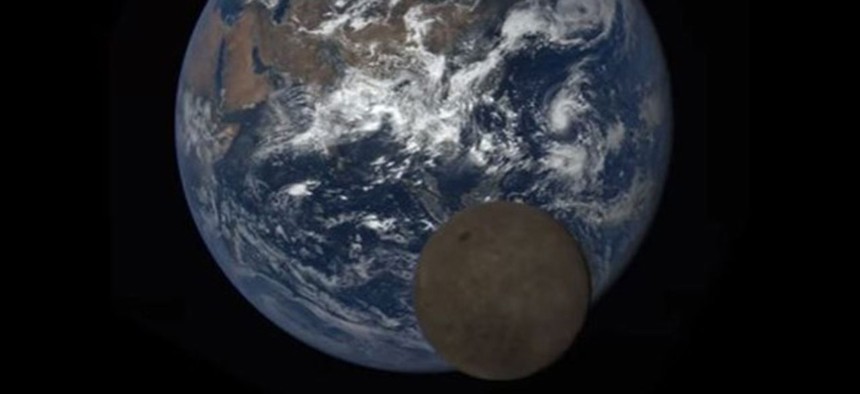
NASA / NOAA
A Government Satellite Captures a Spectacular 'Lunar Photobomb'
The view from 1 million miles away from Earth can be fairly nice.
As pitiful, flightless beings that depend on stuff like oxygen to live, we rarely get to glimpse the hidden “dark” side of the moon.
But a U.S. satellite recently did just that, spotting the cratered orb whizzing past Earth like a bowling ball whiffing on a civilization-ending strike.

The DSCOVR spacecraft, which has provided most-excellent images of the planet since launching last year, captured the crossing on July 5 from a million miles away. It’s only the second “lunar photobomb” spied by the vessel, after a similar event that occurred last July. Here’s more from NASA, which manages the craft along with NOAA and the Air Force:
NASA’s EPIC camera aboard DSCOVR snapped these images over a period of about four hours. In this set, the far side of the moon, which is never seen from Earth, passes by. In the backdrop, Earth rotates, starting with the Australia and Pacific and gradually revealing Asia and Africa….
DSCOVR is orbiting around the sun-Earth first Lagrange point (where the gravitational pull of Earth is equal and opposite of that of the sun) in a complex, non-recurring orbit that changes from an ellipse to a circle and back (called a Lissajous orbit) taking the spacecraft between 4 and 12 degrees from the sun-Earth line. This orbit intersects the lunar orbit about four times a year. However, depending on the relative orbital phases of the moon and DSCOVR, the moon appears between the spacecraft and Earth once or twice a year.
This particular satellite has been on role in snagging these spectacular views. Last year, in a historic first and a delight for umbraphiles, it recorded the moon during a lunar eclipse burning a black shadow across the oceans.
NEXT STORY: Loretta Lynch Can't Escape the Clinton Emails






